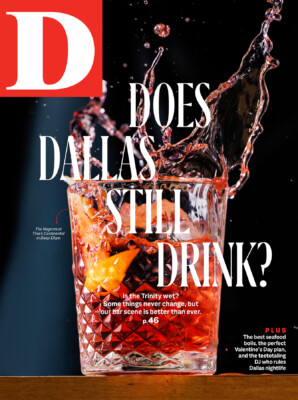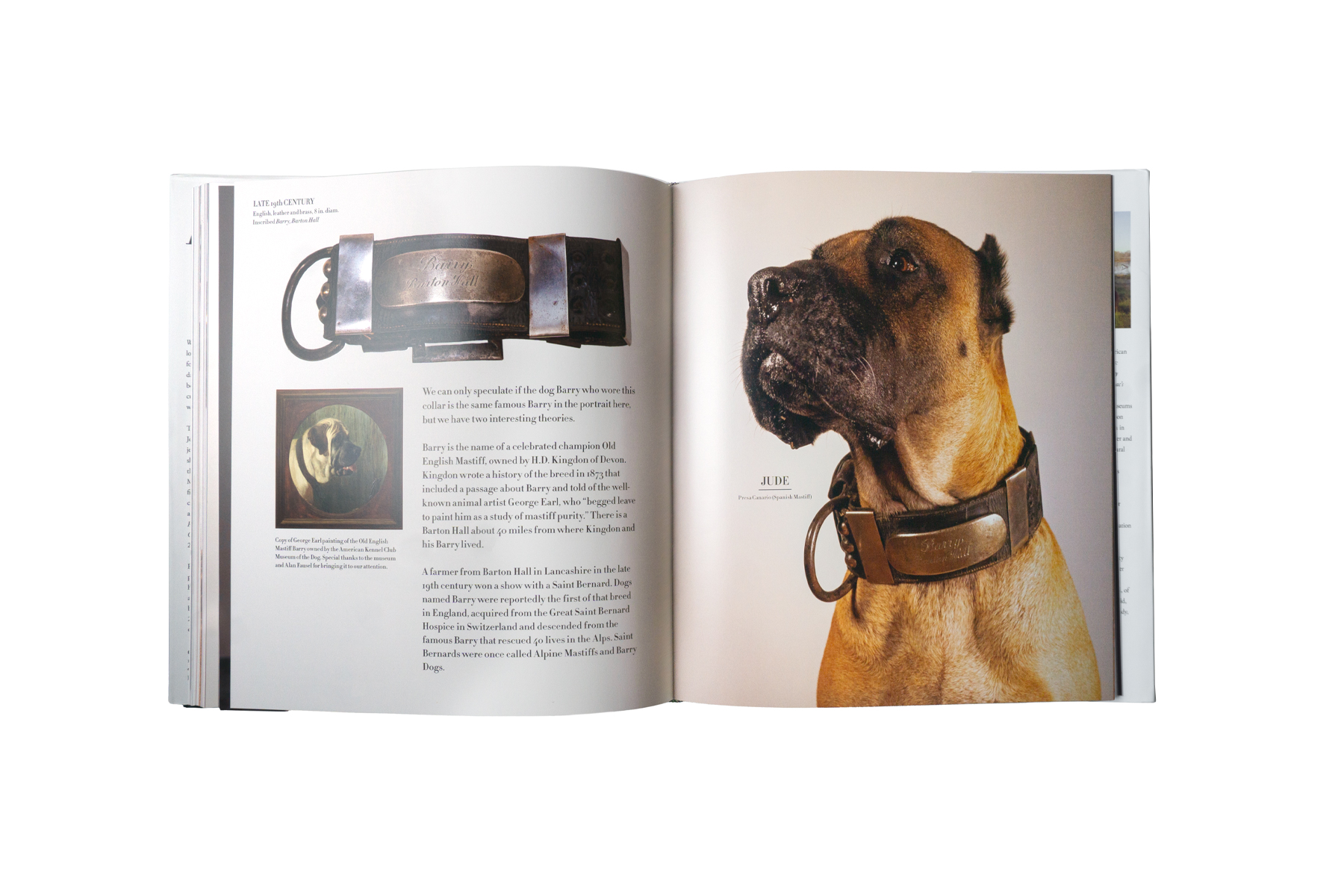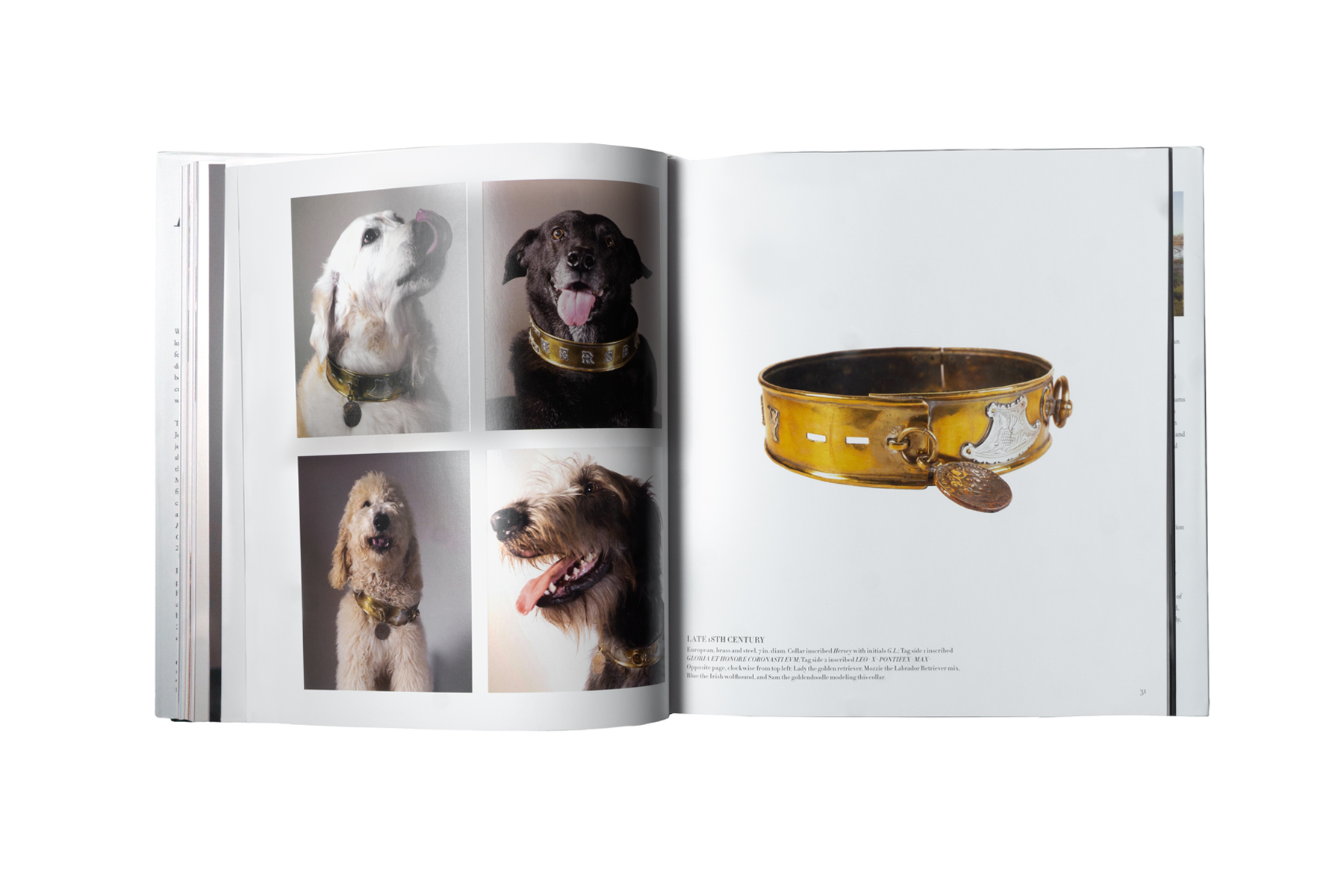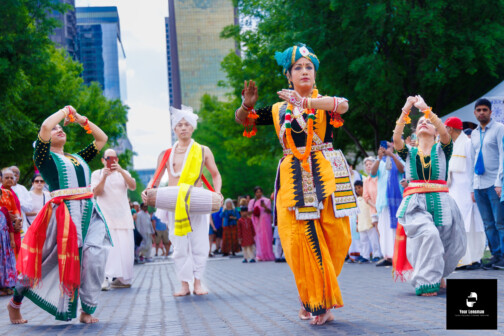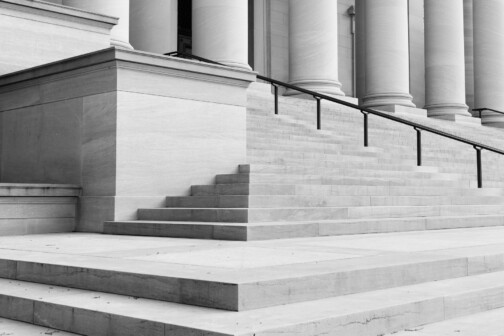On a recent visit to Ron Gard’s North Dallas home, several of the models photographed for his latest book could be heard whining from behind a bedroom door. Ron’s new tome, Whose Dog Are You?—co-authored with his daughter, Christie—captures 253 pages’ worth of Gard’s antique dog collars, dog-handle canes, and other dog-centric collections. He makes no bones about his love of pups nor his compulsion to collect, both of which go back to adolescence.
Gard says his first collection started “as soon as I was old enough to use scissors,” with images of dogs cut from magazines and newspapers, which he safely stowed in a box. Then, while growing up on the pastureland of LaRue, Texas, 88 miles southeast of Dallas, he turned an abandoned ranch house into his own museum by displaying arrowheads, animal skulls, and other interesting artifacts he came across.
It was in the early ̓70s, several years after graduating from UT Austin with a degree in finance (which Gard, in his East Texas drawl, pronounces as “fuh-NANCE”), when his collecting took a serious turn. By that point, he had discovered duck decoys, functional objects that were historically made of wood and used by hunters to attract fowl that, in the last century, emerged as a significant form of folk art. When he was not climbing the Morgan Stanley ladder, Gard was at auctions or antiques shops in pursuit of hand-carved quackers. He even co-authored two books on them.

The decoy trade isn’t for dummies. The sale of a particularly rare and intricately made duck can rope in a healthy six-figure profit, as Gard can attest. “I probably never bought anything that I didn’t think was going to be worth something someday,” he says. Not that profits were ever the real point.
“As far as hobbies go, it couldn’t have been more pleasurable,” he says. “And a lot of it, too, is the people that you meet. The dealers and the collectors become your best friends.”
Those friends have installed him on the boards of important organizations: New York’s American Folk Art Museum for some years and, more recently, the Perot Museum of Nature and Science.
Though decoys have been his main attraction, Gard has never imposed strict parameters on his acquisitions, as evidenced by the giant rusted Pegasus inhabiting his front parlor. He bought it at an auction in Maine, where it was advertised as the prototype of Dallas’ famous mascot, found on a Texas ranch. “The welder was an artist, whoever made that,” Gard says. “Look at that face.”
And he has long collected knives. “You wouldn’t think I would,” he says, “because the first knife my parents gave me for Christmas, I walk out in the backyard after lunch and I’m cuttin’ bushes and I stick it through my leg.” Some of his antique Bowie knives came with tintype photos of the Union soldiers or Native Americans who once used them. A particularly interesting addition: a gun-slash-knife-slash-brass-knuckles combo. “So you were protected, probably,” he says.
The sale of a particularly rare duck decoy can rope in a healthy six-figure profit.
Gard is the keeper of a zoo’s worth of carved and painted animals—a cheetah, bear, and monkey among them—by Dallas’ late, great folk artist Isaac Smith. Gard published a book on Smith in 2000. And over the years, Gard has commissioned Frank Finney to carve fish in the likeness of those he has caught while traveling. “I might be the only person I know who’s fished on all seven continents, including Antarctica,” he says. Christie, who joined the tour, whispers: “Because you’re not supposed to.”
Antique dog collars are a more recent fixation. He was traveling with his wife in Munich when he saw a large painting depicting a boar hunt. He stared up at the scene and noted the long spikes around the dogs’ necks. “I said, ‘Well, that’d be interesting. I’d like to have one of those,’ ” Gard recalls. A decade later, when an antiques dealer at Fair Park had more than a dozen, he bought the whole lot.
Just as it all started with dogs, it will someday end with them. Gard has a 1,500-acre ranch in Miller Grove, 70 miles east of Dallas, where he spends weekends managing the largemouth bass inventory and shooting wildlife (photos, that is). Last year, the Texas Parks and Wildlife Department bestowed on him the Lone Star Land Stewardship Award. The lakes and ponds on the property are all named after the Gards’ departed dogs: Lake Emma, Hunter Lake, Molly Pond. There’s even a cemetery for Gard family canines with tombstones for every one. “That’s where I’ve told them to put me, too,” Gard says. “Anywhere but the city. When you grow up in the country, you really miss being in nature.”
Circles of Life
Throughout history, dog collars have served many purposes: to protect a dog’s neck from another beast’s jaws, to keep the dog tethered to his caretaker, and for identification. Gard’s collection, featured in his book Whose Dog Are You?, covers all the bases.
1. Jude the Spanish Mastiff
To model a thick leather collar that may have once been worn by a champion Old English mastiff in the late 1800s, Gard needed a beast of a dog. One day, while his son was driving, he saw a woman walking this Spanish mastiff. “I said, ‘Stop the car!’ ” Gard recalls. “Of course, she thought I was crazy, and the dog’s looking at me like, I’m going to take your leg off.”
2. Blue the Wolfhound
Photographing dogs isn’t without its challenges, and daughter Christie was tasked as the handler while photographer Jeff Moore took quick snaps. “We learned a lot after the first time,” Christie says. “Like, OK, we have to have fans because it gets hot with all the lights on them, and the dogs just [she pants].” Treats were a necessity. “We had a lot of different kinds of cheese because some dogs were not interested in cheddar,” Christie says. “It had to be very good cheese.” The Irish wolfhounds belonging to Linda Silver, CEO of the Perot Museum, preferred pecorino.
3. Mickey the Terrier
Mickey Mallory was something of a celebrity on the Atlantic City boardwalk in the late 1910s. The Irish terrier performed tricks in cute costumes and collected money for the Red Cross. The organization awarded him this collar. “Unfortunately now, if you look up that name, you get that movie Natural Born Killers,” Christie says. “Zero relation.”
Author




